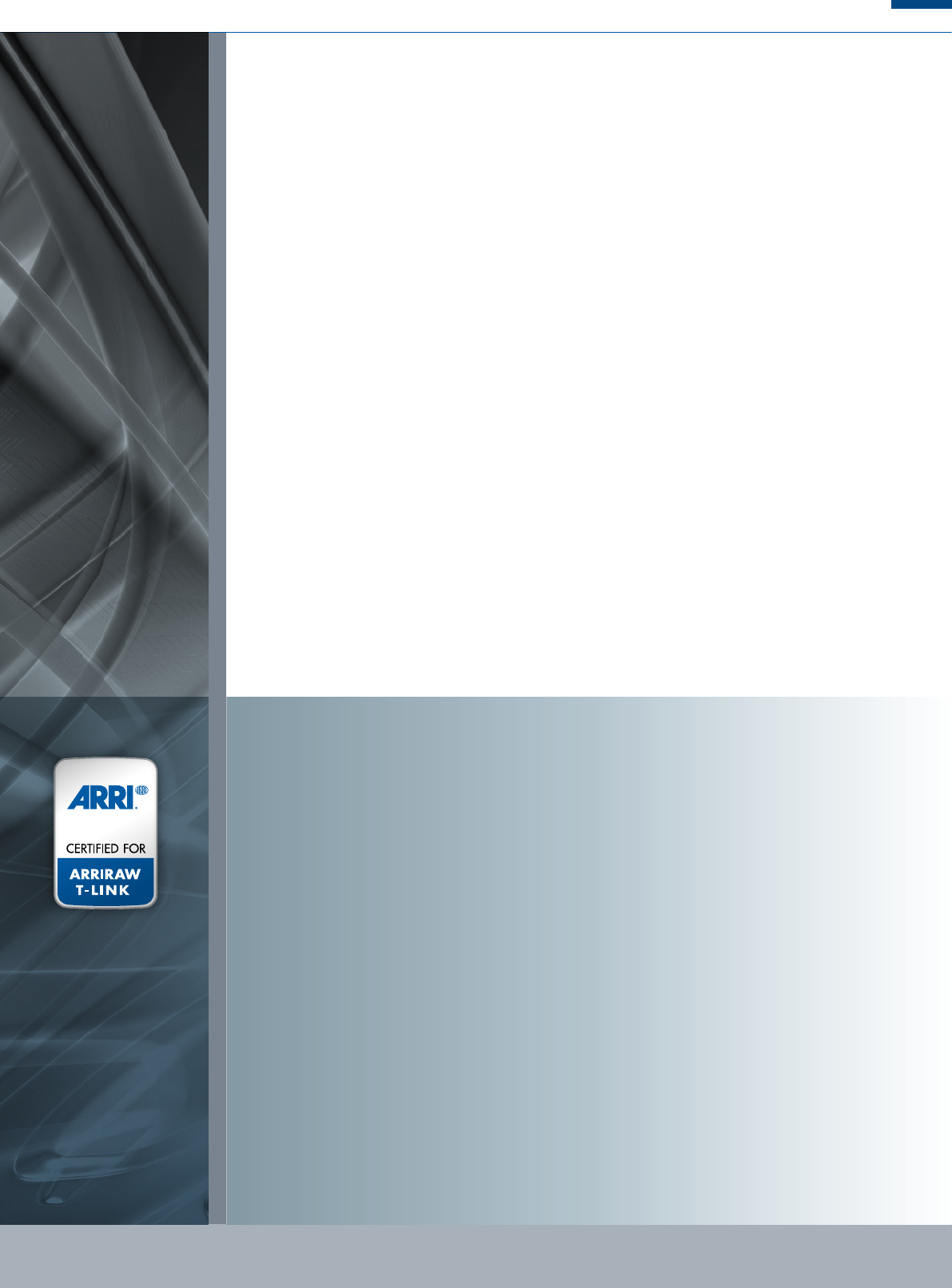
15
ARRI | ARRIFLEX D-21
Different Productions Require Different Outputs
Different projects have different production requirements, budgets and distribu-
tion channels; the equipment chosen has to be exible enough to accommodate
those differences. The unique construction of the ARRIFLEX D-21 allows various
output signals to be generated, accommodating diverse production needs and
pipelines.
In HD Mode, HD output options include 'Linear' or Logarithmic output, 4:2:2
YPbPr or 4:4:4 RGB, Normal or Extended Range, as well as frame rates of up to
60 fps and an optional ber optic link. HD Mode allows the D-21 to deliver its
unique images into the existing HD infrastructure.
Alternatively, or even concurrently, the D-21 can work in Data Mode,
whereby the uncompressed, 12 bit raw Bayer data from the D-21's 4x3 sensor
is available in full resolution. The ARRIRAW T-link (Transport Link) is a method
of transporting the ARRIRAW data over a standard dual link HD-SDI connection.
The data les which result from processing of the ARRIRAW recordings are as
easy to grade as those scanned from lm because they have the same pixel
raster and colorimetry as lm scans.
ARRIRAW T-Link
One of the obstacles that has held back the use of raw data in the past has been the problem of how
to get data easily from the camera to a recorder. ARRI engineers have found a way to utilize a standard
dual link HD-SDI connection to transport the raw D-21 Bayer data. This new transport method is called
"ARRIRAW T-Link" (Transport Link). It allows any recorder capable of recording an uncompressed dual
link HD-SDI stream to record raw D-21 Bayer data, greatly simplifying the raw data workow for manu-
facturers and users alike.
The properties of the dual link HS-SDI connection are defined in SMPTE 372M. The standard specifies
a maximum data rate of 2.97 Gb/s, which is enough bandwidth to carry the 12 bit D-21 raw Bayer data.
SMPTE 372M also defines a number of standardized source signal formats to be sent through two BNC
cables (affectionately known as Link A and Link B).
One of those source signal formats is the RGBA format. RGBA stands for red, green and blue plus an
alpha channel, technically called 4:4:4:4 (R'G'B'+A)/10 bit. The ARRIRAW T-Link works by mapping the 12 bit
raw Bayer data into this RGBA data stream, so that it can be transported via a dual link HD-SDI connection.
Any recorder that is capable of recording a SMPTE 372M compliant RGBA signal and playing it back
without compression or further encoding can record this signal. If the signal is recorded by a data recorder,
the additional option of a live preview exists. The data recorder can extract the original D-21 raw Bayer data
out of the RGBA data stream, and use a real-time image reconstruction algorithm to display the 4:3 image as
a 1440 x 1080 preview HD image. If anamorphic lenses are used on the D-21 a suitably "de-squeezed" image
can be displayed on an HD monitor.
A similar but more refined process is used in postproduction. The original raw Bayer data is extracted
from the RGBA stream, and advanced image reconstruction algorithms are used to reconstruct a pristine
image in HD, 2K or 2.8K. Doing this in post has the added advantage that it does not have to be done in
real-time, so a significantly better image quality and greater flexibility are possible. Note that throughout the
whole process, the image always stays uncompressed, at the highest quality.
FLEXIBLE OUTPUT OPTIONS
Data recorders that can
record and play back the
ARRIRAW T-Link signal
can be certied by ARRI.


















